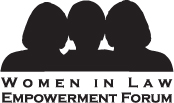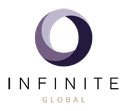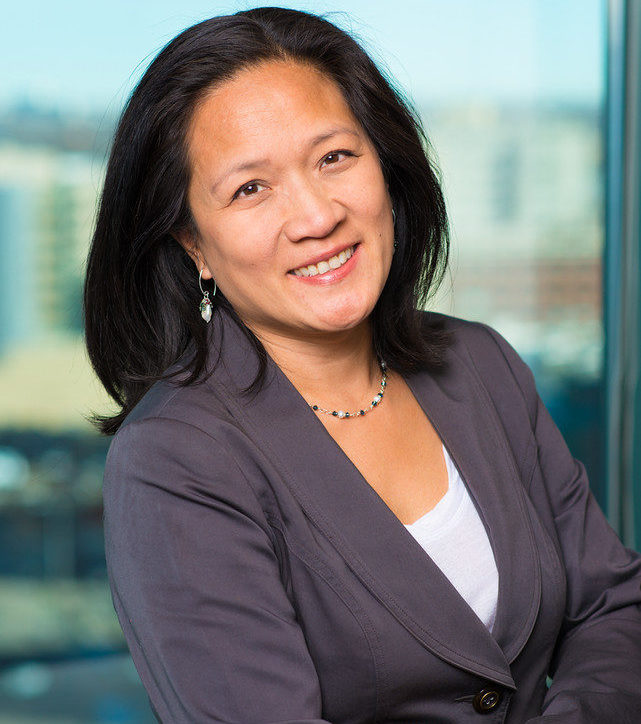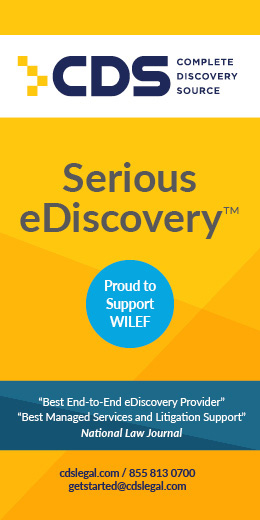As a Gold Standard firm for 10 straight years, Holland & Hart has a laudable record promoting and retaining women that few firms can match. But the firm has not stopped investing in its diversity efforts.
Last year, for example, it created a Diversity Lieutenant position for each practice group to provide an additional layer of support for diverse (including female) lawyers. The firm also implemented a gender-neutral reporting and evaluation system designed to promote the retention and advancement of women by aligning firm values and culture with compensation and promotion. And in 2019, it launched the Solutions to Measure and Reward Talent (SMART) initiative, customized from the winning Diversity Lab Hackathon proposal, creating a nuanced method to identify, track, and reward time invested by attorneys on non-client matters that improve the culture and wellbeing of the firm (often dubbed “office housekeeping”), much of which is performed by women and diverse lawyers.
This year, the firm took another big step by hiring its first Chief Diversity & Inclusion Officer, Phyllis Wan. Wan, a former partner at Hogan Lovells US LLP and in-house counsel at Charter Communications, has long been involved in efforts to diversify the legal profession. Her previous roles include Chief Diversity Officer at Hogan Lovells and Interim Executive Director at the Center for Legal Inclusiveness, a Colorado non-profit organization whose mission is to advance diversity, equity, and inclusion in the legal profession.
Wan recently spoke with The WILEF Tribune about her new role and the opportunities and challenges she sees facing the legal profession.
What drew you to this opportunity?
I have been in Denver now for 27 years and long been aware of Holland & Hart’s reputation for caring about its people and not being overly driven by the bottom line. I’ve told many people—and it’s not a platitude—that it was the one firm I wanted to work for in the diversity and inclusion area. I knew I could fit into the culture and immediately help young and developing lawyers and others on their paths.
What will be your primary focus?
Inclusion, retention, and advancement of diverse and female lawyers remain at the top of my priorities. The question is how do you go about that? I’ve spent much of the last eight weeks getting to know the firm and how it works.
I find that it’s important to drill down and not just look at the quantitative, but the qualitative as well. I’m motivated to create solutions and expand programs we have to ensure that everyone is involved. It can’t be the job of just the diversity committee or the management committee. It’s got to be everyone.
Holland & Hart has been certified as a Gold Standard firm for a record 10 consecutive years. What has the firm done right?
I think it comes from the fact they started early on. For example, it’s reduced hours policy and flexible work offering—which everyone does now—started in the ‘70s and ‘80s. And I think, as a result, they’ve had momentum.
Their efforts have allowed and encouraged women to enter the partnership rank and the equity partner rank while working flexibly. And as a result, those women have been able to move into leadership positions much earlier than at other firms. Our immediate past firm Chair was female, our current managing partner is a woman, and 40% of our management committee members are women. And, many of our practice group leaders, office leaders, and key firm committee leaders are women. When you have diverse leadership, you provide role models for the next generation.
As a former board member of WILEF, you must appreciate the role of metrics in measuring diversity and inclusion efforts.
If it doesn’t get measured, it doesn’t get done. WILEF and other organizations like it help to hold us accountable, bring others on board (internally and externally), and to share best practices with other firms. And I think that’s so important if we want to move the needle in the profession and as a society. It’s been wonderful to see how WILEF has grown and how impactful it has been for the legal profession.
What’s one way you plan on helping Holland & Hart maintain the momentum and keep everyone invested?
Women lawyers tend to do a lot of what we call office housekeeping. Of the administrative jobs, we are seeing that they do twice as much in the partnership rank and 35%-50% more in the associate rank. And yet those are the things that help retention and drive the culture of a firm. Those are the initiatives that help with the succession and the success of the firm, yet they’re often not measured or valued proportionately because their benefits are less tangible and quantifiable.
The firm’s SMART program provides insight into the administrative/non-billable work. That program will enable management to see who’s doing the work and how we can spread it out so that it’s not just the same people all the time doing that work. It will also allow us to reward them accordingly.
What drew you to this kind of work?
I grew up on the edge of Harlem and Spanish Harlem in Manhattan. It was incredibly diverse, not just racially and ethnically, but religiously, educationally, and socio-economically. You had this unique mix of people, so I saw the benefits of diversity and knew I needed to bring those benefits to the Colorado legal community.
It was also important for me to pay it forward because people had helped me throughout my career. I grew up socio-economically disadvantaged, so it was vital for me to do the same because I knew that there were many talented people being left behind.
What did you learn about the legal profession’s diversity efforts during your stint at the Center for Legal Inclusiveness?
I saw that despite our progress with diversity, we still have a long way to go as a profession on the equity and the retention side. If you’re talking about corporations, while they do a better job on retention, there still is a glass ceiling for management positions. In government, same thing, it’s moving up to those upper management positions that is challenging. They all have the same challenges of promoting their people, the younger lawyers, into lasting management positions.
I also saw that the public and private sectors along with the judiciary has to work together in a more intentional way, not in the silos we are in now. That means sharing challenges and best practices about how to disrupt bias and remove the impediments that diverse and female lawyers face.
Why is investing in diversity and inclusion so crucial at this moment?
If we don’t want to lose the ground that we’ve gained in the last 10 years, we have to look beyond the traditional performance indicators like billable hours and revenues and pay attention to workplace culture. It is not good enough to bring people in and ask them to assimilate in a way that loses the benefit of the diversity they bring to an organization. We need to look at what people can contribute, not ask them to fit into a pre-existing mold of what a successful lawyer looks like historically. And if we want to continue providing our clients with the best service, the most innovative ideas, and the best lawyering, we need to keep our diverse and female talent engaged and tapped.
There are many ways to double down on diversity. And quite frankly, much of it is not based economics. It’s about focusing on your people, focusing on those who need it the most at this time and being sensitive to their circumstances so they can continue to thrive and succeed. Right now, we need to be very intentional about how we help our people, specifically our female lawyers, who often have to juggle more domestic and family responsibilities.
What kind of DE&I programming is most needed now?
We hear everyone talk about sponsorship and how important that is. I think the most critical part is having a champion, that person who will work with you within your practice group or industry sector who will introduce you to clients and bring you along and help develop your skills as a lawyer.
That will never go away, and it has to be more individualized during this work-from-home environment. People are managing so much more with their personal lives, and they’re putting most of their energies on just getting their client work done. Unfortunately, things like diversity and inclusion programs and professional development are put on the back burner. We can’t let that happen.
And that’s where the middle managers come in. I have always been lucky enough to have in my organizations the buy-in from management. But really it’s the people who are giving out the work that are key —it’s important that they continue to bring in female and diverse lawyers for business development, pitches and work, and keep them involved, because that’s really where the rubber meets the road.
What’s been your assessment of the legal profession’s response to the protests over police brutality and racism?
I’ve been incredibly impressed with how much people want to help, how much they want to learn, how much they want to grow, and how much they acknowledge they didn’t know before. I have seen major shifts from people “not being a racist” to “being an anti-racist”.
But I think it’s also obvious that law firms, with their deep resources, need to take the reins. We really can make a difference and effectuate systemic change in law enforcement and social justice. It’s not good enough to make a donation. We need people to do the work and use their considerable and collective voices.
How do you see the chief diversity and inclusion officer role evolving over the next few years?
It used to be that that chief diversity officer role was an exterior-facing role held by a partner or executive in a firm or corporation, pulling double duty. Or, you would find that person and his/her team focused on recruiting and housed within an HR department. But now, CDOs and CDIOs have become more strategic and proactive, fully devoted to their D&I responsibilities and separate from HR. They have been given the responsibility and authority from management to work with other business service teams and firm leaders, whether that is the client service department, practice group and office leaders, the marketing team, or the pro bono team, to create a cohesive diversity plan.
In the last few years, we’ve also seen “inclusion” added to the chief diversity officer title. We all know diversity is more about the numbers and advancement results; inclusion is about the experience when they get there, resulting in retention and their ultimate success. As I said before, it’s essential that everyone takes responsibility and that everyone feels included. And I think as the CDO role and the CDIO role evolve, you will find that it is about what corporate America calls social responsibility and corporate responsibility. It includes the whole company, and everyone understands that there’s a part to be played for them. It’s should be no different for law firms.



